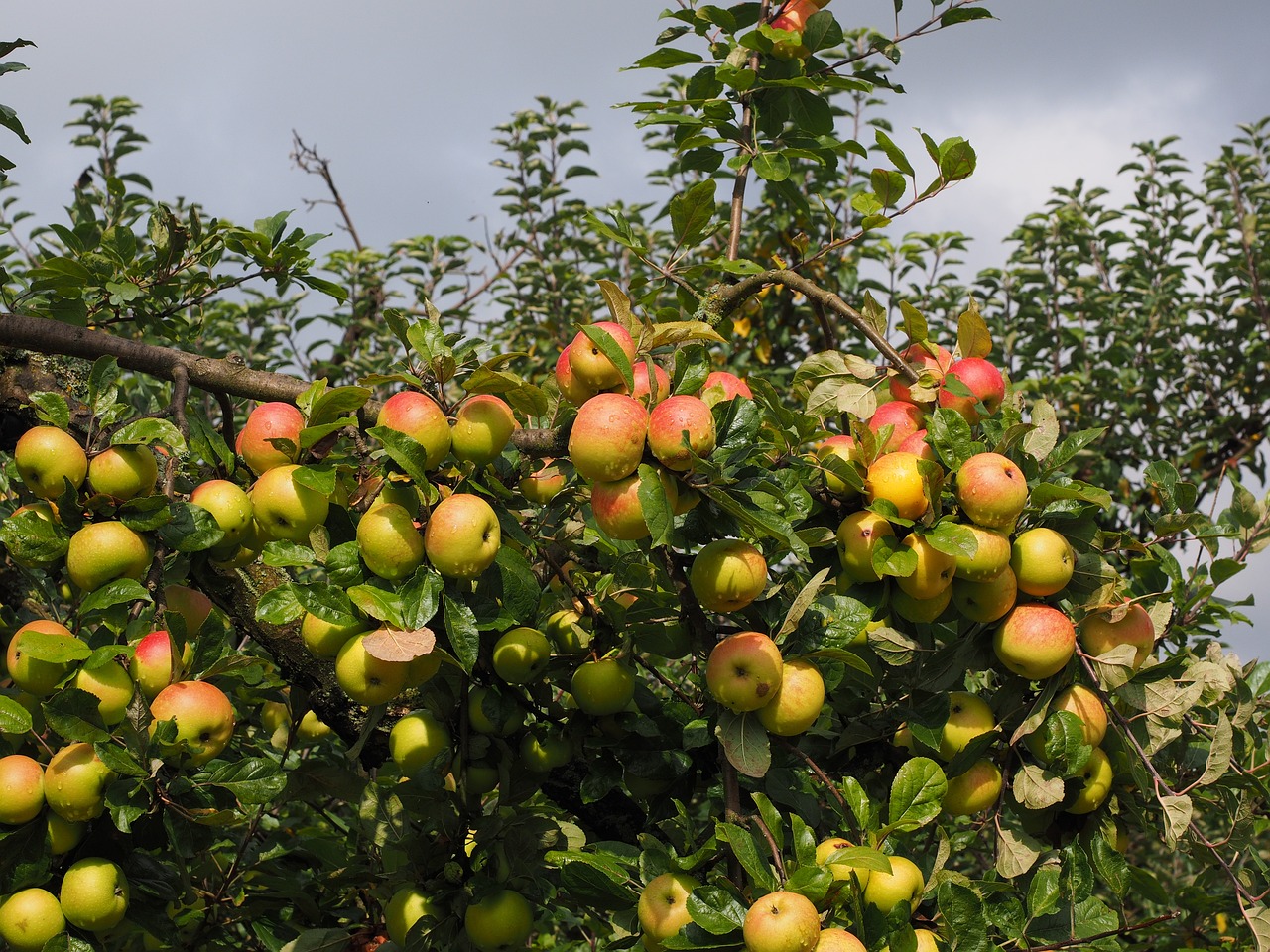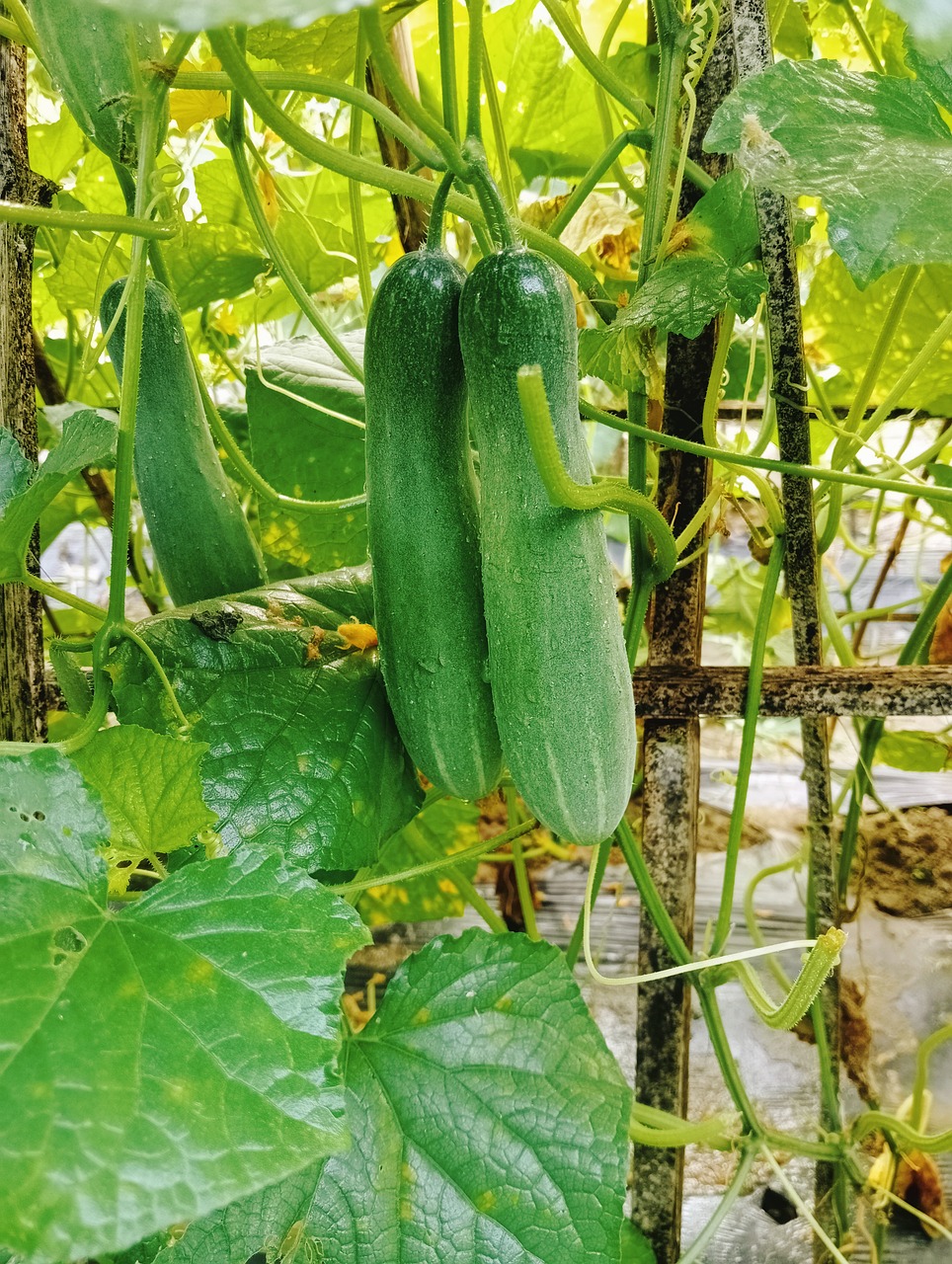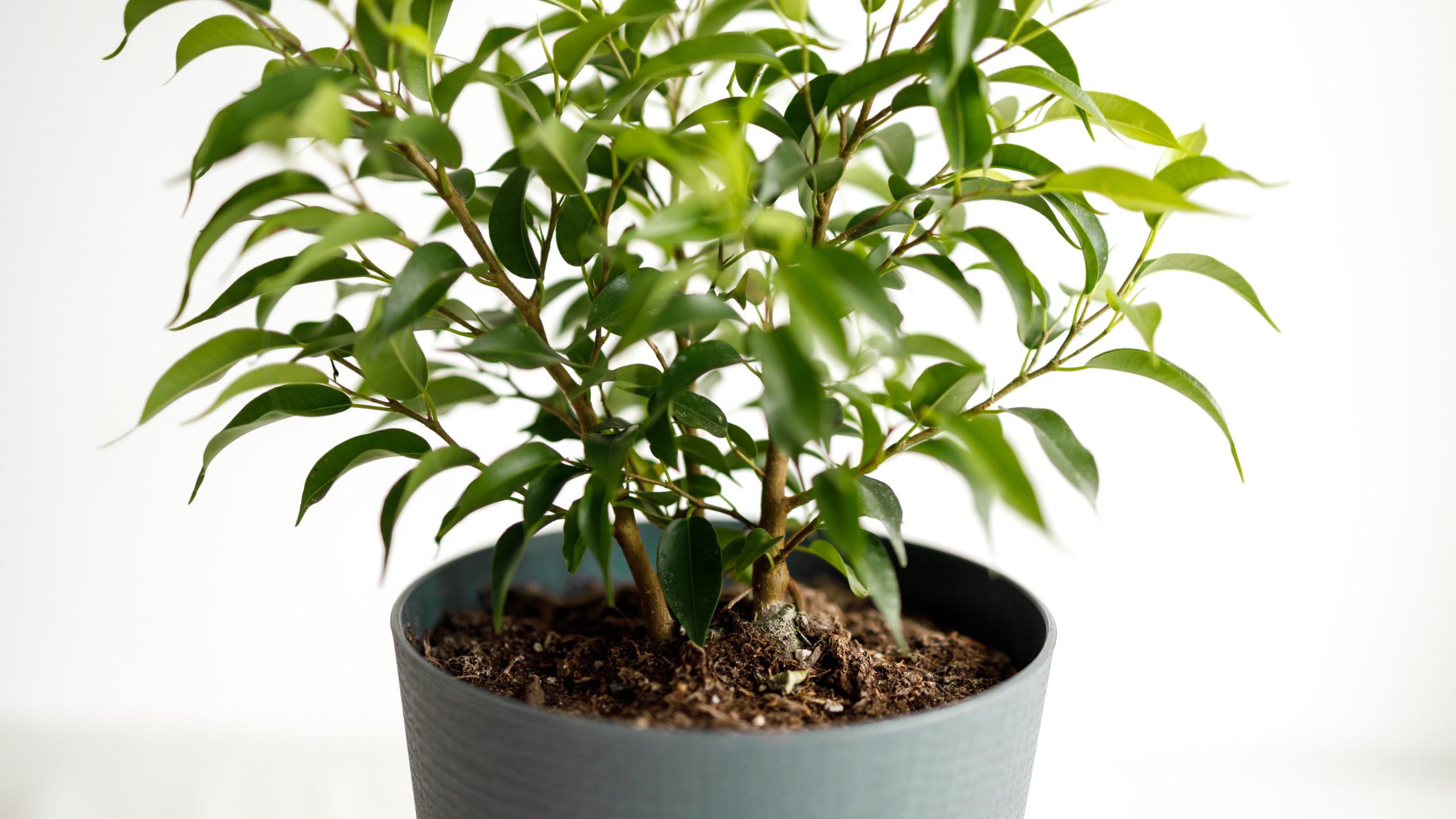With so many apple varieties available to choose from, it can be confusing for a novice gardener to decide on which variety to grow. The aroma of apples can be subtly floral, fruity, or spicy, with hints of vanilla, cinnamon, or citrus and be sweet, tart, or a little of both, depending on variety. Choose a variety that is native to your region as it can easily thrive in your region’s climatic conditions.
Apple trees undergo a mesmerizing transformation throughout the seasons, from the bare branches of winter to the blossoms of spring, the lush foliage of summer, and the vibrant colors of autumn. The sight of apple blossoms in full bloom is a breathtaking spectacle, which attracts pollinators such as bees and butterflies and signals the beginning of a new growing season.
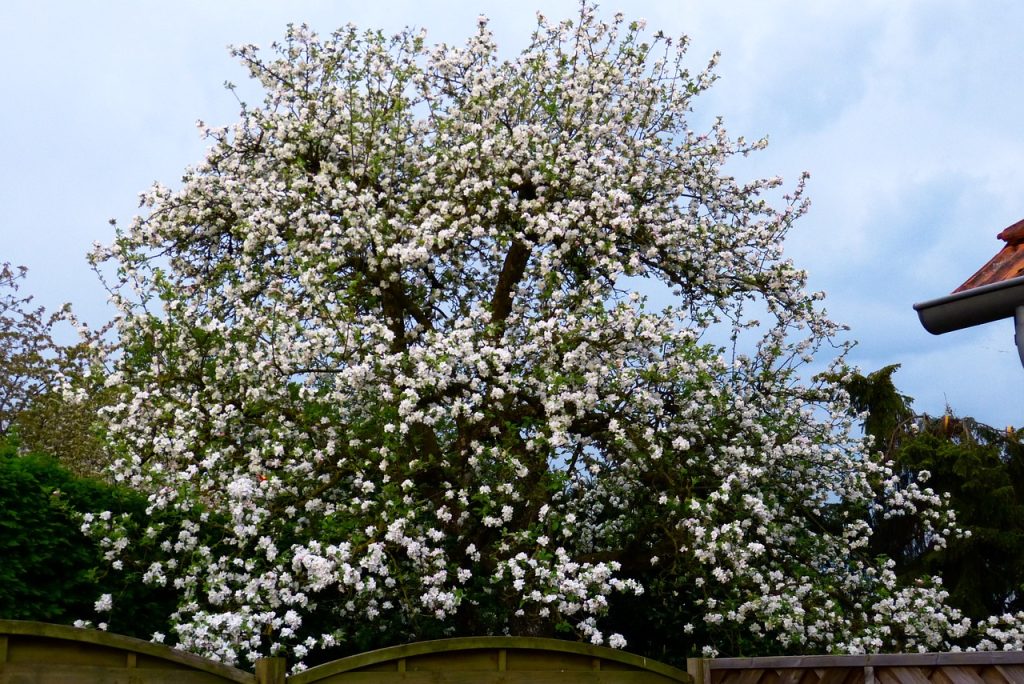
Description
Apple trees are deciduous trees belonging to the family Rosaceae and genus Malus. They are widely grown in temperate regions of the world for their delicious fruit as well as their ornamental value.
Apple trees can grow upright, in a spreading habit or weeping habit depending on the cultivar. They produce beautiful, fragrant flowers during spring, which can be pink or white.
Fruits come in various sizes, colors and shapes depending on the cultivar grown. They are rich in dietary fiber, vitamin C, potassium, and various antioxidants and can be eaten fresh or used in pies, juices and sauces.
| Botanical name: Malus domestica | Propagation: Budding, grafting, seeds, layering |
| Common name: Apple | Soil type: Loam, Sandy loam |
| Family: Rosaceae | Soil pH: 6.0-7.0 |
| Plant type: Deciduous perennial | Temperature: 60°F-75°F |
| Hardiness zones: USDA zones 3-5 | Light: Full sun |
| Mature size: 8-10ft. tall | Spacing: 10-25ft. |
| Fruit color: Red, yellow, green | Pollination: Self pollination |
| Time to maturity: 2-8 yeas | Toxicity: Non toxic |
| Native area: Central Asia |
Temperature requirements
Apple trees grow well in temperate climate regions of the world. They prefer a growing season with moderate temperatures, generally between 60°F (15°C) and 75°F (24°C). Extreme heat during the growing season can stress the trees and affect fruit development.
Most apple varieties require a certain number of chilling hours during the winter months to break dormancy and set fruit properly. This occurs between 32°F (0°C) and 45°F (7°C) during the dormant period. Chilling requirement varies depending on the apple variety, but it typically ranges from 400 to 1,500 hours.
Soil requirements
Apple trees can grow in a wide range of soils, but for best results, grow trees in rich sandy loam or loam soil, with pH of 6.0-7.0.
Apple trees require deep well draining soils to prevent waterlogging and root rot. Avoid planting trees in low-lying areas which become frost pockets during the winter and are prone to flooding.
Light/Sun requirements
Apple trees need full sun for optimal growth and development. Select an area that receives at least 6-8 hours of sunlight per day. The area should also be 6-8m away from buildings, other trees, utilities and other structures. Sunlight is crucial for growth, flowering and fruit development.
Common Apple varieties to grow
Gala: This is a crisp and sweet apple with a mild flavor. Gala apples are excellent for eating fresh and are widely grown in many regions.
Red Delicious: Despite being controversial for some due to variations in flavor and texture, Red Delicious apples are still popular for their sweet flavor and deep red color. They are suitable for eating fresh and adding to salads.
Fuji: Known for its exceptional sweetness and crisp texture, Fuji apples are great for both fresh eating and cooking.
Granny Smith: These tart and crisp apples are popular for baking, cooking, and making cider. They also have excellent storage qualities.
Honeycrisp: Honeycrisp apples are known for their crisp texture and balanced sweet-tart flavor. They are excellent for fresh eating but may not store as well as some other varieties.
Jonagold: Jonagold apples offer a unique blend of sweet and tart flavors. They are good for both fresh eating and cooking.
When to plant Apple trees
Spring Planting: If you live in a region with mild climate and well-drained soil, the best time to plant your apple trees is during the spring. Planting trees in early spring allows them to establish their roots before the onset of hot summer weather. Plant apple trees as soon as the ground is workable and not frozen.
Fall Planting: Fall planting is also suitable if you live in a region that experiences mild winters. Planting in the fall allows the tree to establish its root system before winter dormancy. However, avoid planting too late in the fall, as it may not allow enough time for the tree to establish roots before winter.
Soil preparation and planting
Take soil samples at the site where you want to plant and determine pH and micronutrients so that you can adjust appropriately.
Till the area and remove large stones.
Dig a hole that is twice as deep and twice as wide as the rootzone of the plant.
Incorporate 2/3 cups of lime and 2/3 cups of phosphorous in the hole and stir lightly at the bottom of the hole. Do not apply nitrogenous fertilizer at the time of planting.
Place the tree in the hole, hold it in upright position and backfill with soil. Ensure that the graft union of the tree is 2-3in. above soil surface and also ensure that the soil is leveled to ground level.
If you are planting more than one apple tree, provide spacing of 10-25ft between trees, depending on variety.
Water the ground thoroughly to remove all air pockets and keep the soil moist. Apply a layer of mulch to the ground to preserve moisture and control weed growth.

Care and maintenance
Support: For the first 2-3 years, the apple tree needs support. Support the tree using a wooden log by tying it about 4in. from the tree and tying a non-abrasive rope around the log and the plant. Ensure that there is some little flexibility between the tree and the log, so that the tree does not get chocked or grow around the log. After 2-3 years, you can remove the log.
Mulching: Apply a 2–4-inch layer of mulch around the tree to preserve moisture and control weed growth. Mulch can be in form of pine needle, bark, leaves and straw. Keep mulch around 5in. from the tree trunk to avoid pests feeding on roots and the tree trunk.
Watering: Water the tree when it is still young, whenever the soil dries out and especially during the dry season.
Painting the tree: During winter, warm spells cause sap to rise in young trees. Sudden drops in temperature cause the sap to expand and split the bark, causing damage to the tree. This usually occurs on the Southwest end of the tree; hence it is called Southwest injury.
To prevent this, apply a thick coat of light-colored latex paint to the tree trunk from the soil level up to around 5ft every one or two years for 8-10 years.
Pruning: Apple trees require pruning from the time when they are young and even when they mature. Pruning improves air circulation around the tree, increases sunlight accessibility brings out a well-framed tree with strong branches and increases the productivity of the tree.
How to Harvest Apples
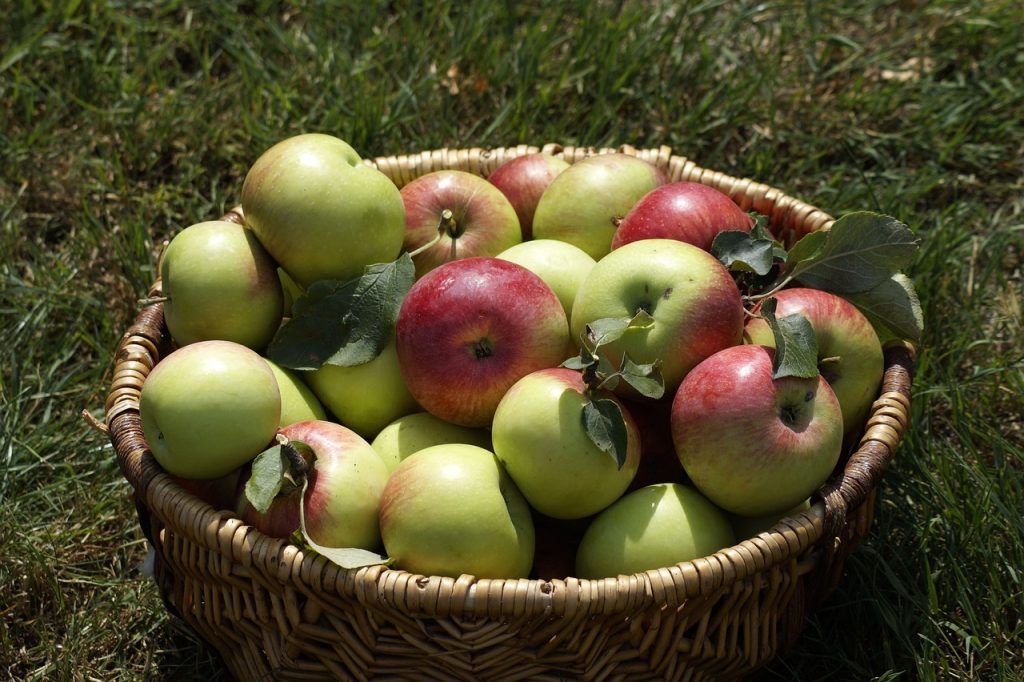
Harvest apples when they’re mature but before they’re fully ripe. This varies depending on the variety. Generally, apples are ready for harvest in late summer to fall.
Gently twist or lift the apple upwards and slightly twist to detach it from the branch. Avoid pulling too hard, as this could damage the tree or the fruit.
Place apples in a basket or container lined with soft material such as straw or cloth.
Storing Apples
Store apples in a cool area to slow down the ripening process. Ideal temperatures range from 30 to 40°F (-1 to 4°C). A cool basement, root cellar, or refrigerator are good locations.
In a refrigerator, aim for humidity levels between 90-95%. You can achieve this by storing apples in perforated plastic bags or crates lined with damp paper towels.
Pests and diseases
Apple tree diseases include Alternaria, fire blight, scab, black rot and bitter rot.
Control: Prune trees to provide proper air circulation, dispose of fallen leaves and rotten fruit, spray with appropriate chemicals and cut down and destroy severely affected trees.
Pests include red spider mites, aphids, fruit worms, scales, apple tree borers and apple maggots.
Control: Dispose of fallen leaves and rotten fruit, use appropriate physical and chemical pest control methods.

